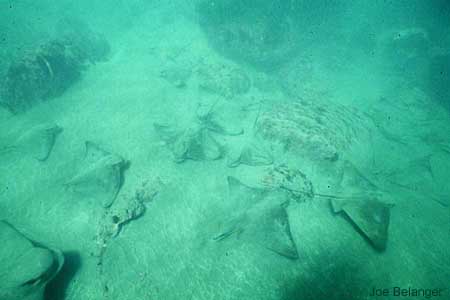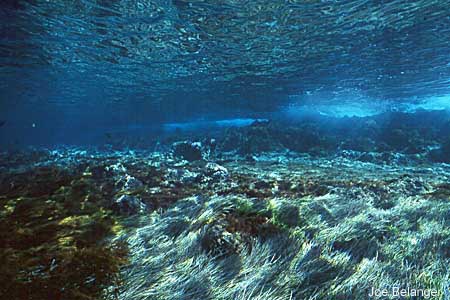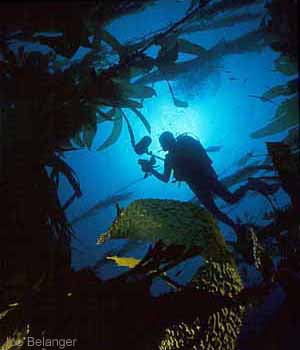| |

WA-003
|
| |
Dive Boat as seen from underwater
Photographed at Johnson's Rock, Catalina Island. Our dive boat, Encore, was floating in clear calm water when I looked up and saw its name. So I snapped a picture or two and gave a copy to the boat owner.About the dive boat: Encore is one of California's best dive boats. It won the 'Rodales Day Dive Boat of the Year' award in 1996. Very large galley, bunk area and there are three heads for those divers who refuse to admit that they urinate in their wetsuits. |




